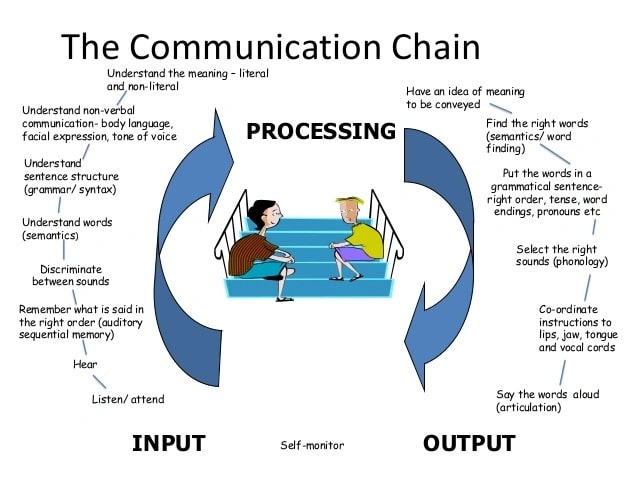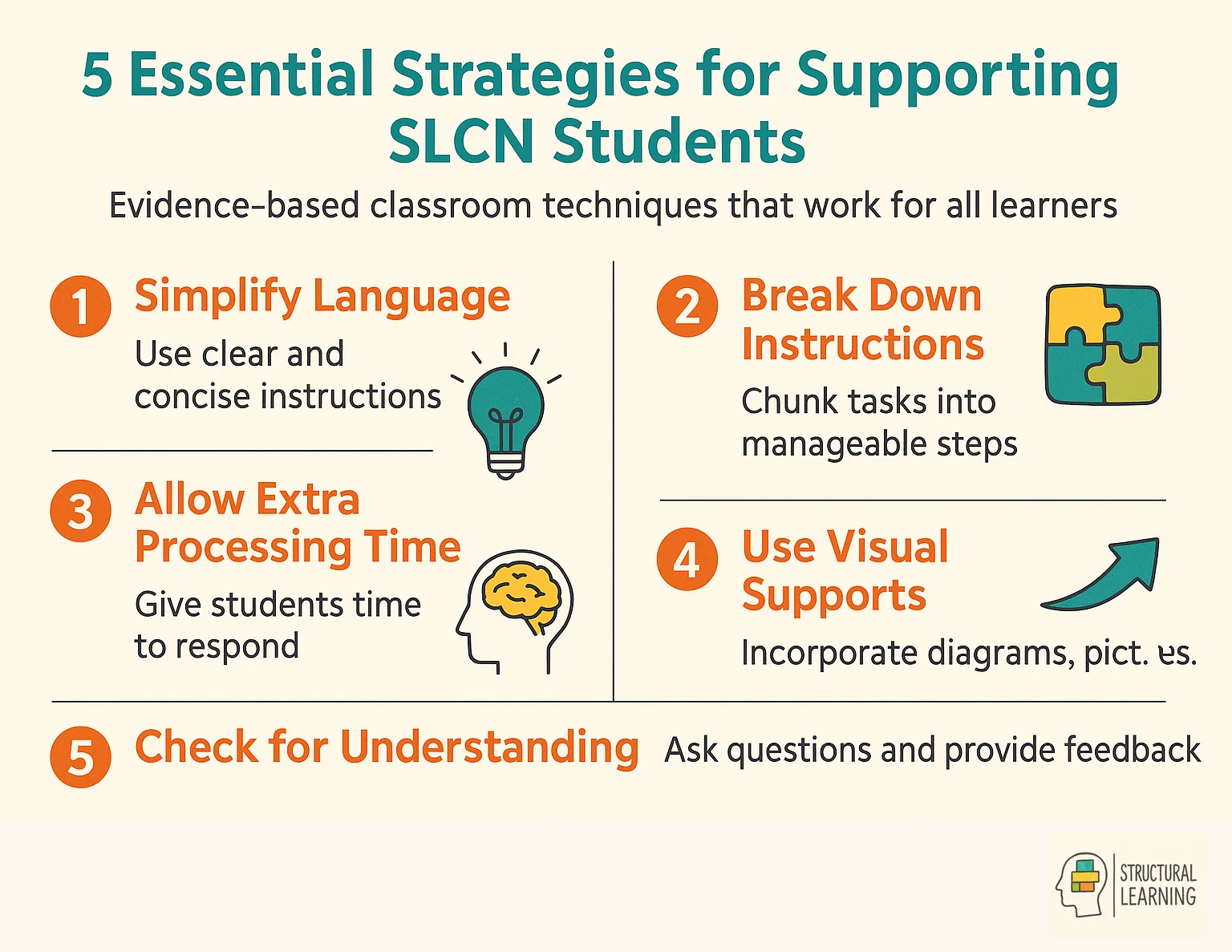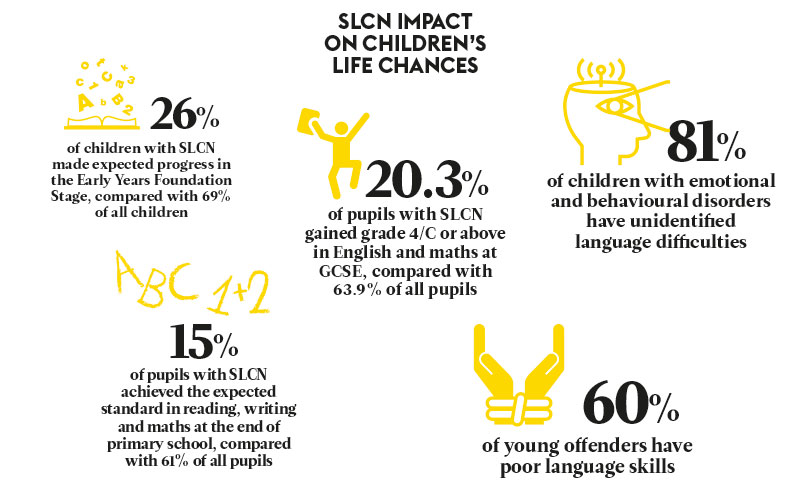Speech, Language and Communication Needs (SLCN): A Teacher's Guide
Understand speech, language and communication needs in the classroom. Learn to identify SLCN, implement effective support strategies, and create communication-friendly environments.


Understand speech, language and communication needs in the classroom. Learn to identify SLCN, implement effective support strategies, and create communication-friendly environments.
Speech, language and communication needs (SLCN) affect about 10% of children in UK schools. Many go unnoticed. SLCN covers difficulties with speech sounds, understanding language, using language, and social communication. These difficulties can impact learning, behaviour, and friendships.
This guide helps teachers spot SLCN, understand what it means, and use practical strategies. The goal is to make classrooms work better for all learners.
SLCN is often called a 'hidden disability' because it's hard to see. Children with SLCN may struggle with behaviour and motivation, as well as social and emotional development. They may also find it harder to succeed in school without the right support.
Research suggests SLCN may be linked to how the brain develops. It can also be affected by a child's life experiences and home environment. Both nature and nurture play a role.
SLCN is linked to differences in how the brain processes language, with research showing that language systems develop early in life. Studies indicate that developmental language disorder (DLD) involves specific brain processing differences, but early intervention can help children improve their language skills significantly. Both genetic factors and life experiences play important roles in how SLCN develops.
Studies show that the brain systems for language are in place early in life. This suggests genes play a role in how we learn to speak and understand words.
Developmental language disorder (DLD) is a type of SLCN. It affects how children understand and use language. SLCN can sometimes occur alongside other developmental conditions like ADHD. Research shows DLD is linked to differences in how the brain processes language.
The good news is that early help makes a difference. With the right support, children with DLD can improve their language skills and do well in school. Supporting these pupils also has positive impacts on overall student wellbeing.

SLCN affects multiple areas of development including behaviour, motivation, social skills, and academic achievement. Children with SLCN often struggle to form friendships and may display challenging behaviours because they cannot express themselves or understand others effectively. Without proper support, these difficulties can lead to lower educational outcomes and reduced confidence.
Communication difficulties can have wide-reaching effects on a child's development. If a child cannot communicate well, their learning will suffer. They may struggle to make sense of what is being taught.
 strategies for supporting students with speech, language and communication needs" loading="lazy">
strategies for supporting students with speech, language and communication needs" loading="lazy">
Teaching approaches like and active learning rely on good communication. Children with SLCN may not benefit fully from these methods without extra support.
Home experiences matter too. Children who grow up in homes with lots of books and conversation tend to develop stronger language skills. This is sometimes called .
Without strong language skills, children may find it hard to succeed in school. They may also struggle to connect with peers and build positive relationships.

Teachers can build cultural capital by exposing SLCN pupils to diverse experiences through visual supports, structured discussions, and hands-on activities. Creating language-rich environments with clear visual cues, word walls, and repeated exposure to new vocabulary helps all pupils access learning. Regular use of storytelling, role-play, and collaborative activities provides multiple opportunities for language practice in meaningful contexts.

Effective Early Years strategies include using visual timetables, gesture-based communication, and simplified language with repetition. Teachers should create predictable routines, provide thinking time before expecting responses, and use concrete objects to support understanding. Breaking instructions into small steps and using visual prompts helps young children with SLCN follow classroom activities successfully.
Here are nine practical ways to support children with SLCN in settings:
For example, you might show a picture of a dog while saying the word. This helps children link the image to the word.
Research suggests 7% to 10% of people worldwide have communication difficulties. This shows why good strategies for SLCN matter in every classroom.

Teachers should be aware that SLCN often co-occurs with other conditions like ADHD, dyslexia, or autism spectrum conditions. Environmental factors such as limited language exposure at home, trauma, or frequent school moves can compound communication difficulties. Recognising these additional challenges helps teachers provide more comprehensive support and avoid misinterpreting difficulties as behavioural issues.
Children with SLCN face several common problems in the classroom:
Understanding difficulties: Some children may not understand instructions. They might copy others or act out to hide their struggles. This can look like or bad behaviour, but the cause may be SLCN.
Expressing ideas: Children who struggle to share their thoughts may become frustrated and isolated. Adults and peers may include them less in discussions, which makes things worse.
Social communication: Some children interrupt or avoid eye contact. This can annoy others and make it hard to form friendships.
Speech difficulties: When it takes time for a child to speak clearly, others may talk to them less. The child may then feel left out of group activities.
Reading challenges: The focus on phonics in reading instruction can be hard for children with speech difficulties. A non-verbal reading approach, where an adult sounds out words while the child follows along, can help with understanding.
Research shows that approximately 10% of pupils have SLCN, with many cases going unidentified in mainstream classrooms. Studies demonstrate that early intervention and consistent use of visual supports significantly improve outcomes for these pupils. Evidence indicates that whole-class approaches to language development benefit all pupils while providing essential support for those with SLCN.
Several important studies have shaped how we understand and support SLCN:
1. Teachers and speech therapists working together
This study looked at how teachers and speech and language therapists (SLTs) can work as a team. It found that better training and more resources help children with SLCN (Glover, McCormack, & Smith-Tamaray, 2015).
2. in the classroom
This research trained teachers and teaching assistants to use visual aids. It found that such training helps children with SLCN learn better (Wellington & Stackhouse, 2011).
3. Challenges for practice in England
This study compared how teachers and SLTs think about SLCN. It highlighted the need for better training and clearer ways to identify children who need help (Dockrell, Howell, Leung, & Fugard, 2017).
4. Communication and behaviour
This review looked at how communication help affects behaviour. It found that targeted support can improve both communication and (Law, Plunkett, & Stringer, 2012).
5. Language difficulties across England
This study used national data to understand how common language problems are. It called for support based on each child's needs, not just labels (Lindsay & Strand, 2016).
Speech, Language and Communication Needs (SLCN) affect about 10% of children in UK schools and cover difficulties with speech sounds, understanding language, using language, and social communication. It's often called a 'hidden disability' because these difficulties are hard to see but can significantly impact learning, behaviour, and friendships. Many children with SLCN go unnoticed in classrooms despite their struggles.
Children with SLCN may act out, copy others, or avoid participation to hide their communication struggles, which can look like defiance or bad behaviour. If a child frequently doesn't follow instructions, becomes frustrated when trying to express ideas, or shows social communication difficulties like interrupting or avoiding eye contact, SLCN may be the underlying cause. Teachers should consider whether the child might genuinely not understand rather than choosing to misbehave.
Visual aids such as pictures, symbols, gestures, and visual timetables help children with SLCN understand instructions and classroom routines more effectively. Teachers should use concrete objects alongside spoken words, for example showing a picture of a dog while saying the word to help children link the image to the word. Visual supports work particularly well when combined with clear, simple speech and repeated exposure to new vocabulary.
The nine strategies include: creating language-rich spaces with interesting objects and books, using clear simple speech with visual aids, giving thinking time after questions, building social skills through role-play and group activities, focusing on speech sounds through rhymes and songs, watching for behaviour links to communication problems, working with families, trying multisensory approaches, and seeking expert help from speech and language therapists when needed. These strategies help create predictable routines and break down instructions into manageable steps for young children.
Teachers should get to know each child and family individually whilst adding materials that reflect different cultures, such as dual-language books and diverse resources. They can use the local area for learning, share the school's history and staff expertise, and remember that children express emotions differently through their behaviour. Creating structured discussions, hands-on activities, and using storytelling provides meaningful opportunities for language practice whilst exposing children to diverse experiences.
SLCN often co-occurs with other conditions like ADHD, dyslexia, or autism spectrum conditions, making support more complex. Environmental factors such as limited language exposure at home, trauma, or frequent school moves can compound communication difficulties. Recognising these additional challenges helps teachers provide more comprehensive support and avoid misinterpreting difficulties as purely behavioural issues.
Research shows that SLCN is linked to differences in how the brain processes language, with language systems developing early in life through both genetic factors and life experiences. Early intervention can help children with developmental language disorder (DLD) improve their language skills significantly and succeed in school. The good news is that with the right support, children's brains can adapt and develop better communication abilities, leading to improved academic outcomes and overall wellbeing.
Speech, language and communication needs (SLCN) affect about 10% of children in UK schools. Many go unnoticed. SLCN covers difficulties with speech sounds, understanding language, using language, and social communication. These difficulties can impact learning, behaviour, and friendships.
This guide helps teachers spot SLCN, understand what it means, and use practical strategies. The goal is to make classrooms work better for all learners.
SLCN is often called a 'hidden disability' because it's hard to see. Children with SLCN may struggle with behaviour and motivation, as well as social and emotional development. They may also find it harder to succeed in school without the right support.
Research suggests SLCN may be linked to how the brain develops. It can also be affected by a child's life experiences and home environment. Both nature and nurture play a role.
SLCN is linked to differences in how the brain processes language, with research showing that language systems develop early in life. Studies indicate that developmental language disorder (DLD) involves specific brain processing differences, but early intervention can help children improve their language skills significantly. Both genetic factors and life experiences play important roles in how SLCN develops.
Studies show that the brain systems for language are in place early in life. This suggests genes play a role in how we learn to speak and understand words.
Developmental language disorder (DLD) is a type of SLCN. It affects how children understand and use language. SLCN can sometimes occur alongside other developmental conditions like ADHD. Research shows DLD is linked to differences in how the brain processes language.
The good news is that early help makes a difference. With the right support, children with DLD can improve their language skills and do well in school. Supporting these pupils also has positive impacts on overall student wellbeing.

SLCN affects multiple areas of development including behaviour, motivation, social skills, and academic achievement. Children with SLCN often struggle to form friendships and may display challenging behaviours because they cannot express themselves or understand others effectively. Without proper support, these difficulties can lead to lower educational outcomes and reduced confidence.
Communication difficulties can have wide-reaching effects on a child's development. If a child cannot communicate well, their learning will suffer. They may struggle to make sense of what is being taught.
 strategies for supporting students with speech, language and communication needs" loading="lazy">
strategies for supporting students with speech, language and communication needs" loading="lazy">
Teaching approaches like and active learning rely on good communication. Children with SLCN may not benefit fully from these methods without extra support.
Home experiences matter too. Children who grow up in homes with lots of books and conversation tend to develop stronger language skills. This is sometimes called .
Without strong language skills, children may find it hard to succeed in school. They may also struggle to connect with peers and build positive relationships.

Teachers can build cultural capital by exposing SLCN pupils to diverse experiences through visual supports, structured discussions, and hands-on activities. Creating language-rich environments with clear visual cues, word walls, and repeated exposure to new vocabulary helps all pupils access learning. Regular use of storytelling, role-play, and collaborative activities provides multiple opportunities for language practice in meaningful contexts.

Effective Early Years strategies include using visual timetables, gesture-based communication, and simplified language with repetition. Teachers should create predictable routines, provide thinking time before expecting responses, and use concrete objects to support understanding. Breaking instructions into small steps and using visual prompts helps young children with SLCN follow classroom activities successfully.
Here are nine practical ways to support children with SLCN in settings:
For example, you might show a picture of a dog while saying the word. This helps children link the image to the word.
Research suggests 7% to 10% of people worldwide have communication difficulties. This shows why good strategies for SLCN matter in every classroom.

Teachers should be aware that SLCN often co-occurs with other conditions like ADHD, dyslexia, or autism spectrum conditions. Environmental factors such as limited language exposure at home, trauma, or frequent school moves can compound communication difficulties. Recognising these additional challenges helps teachers provide more comprehensive support and avoid misinterpreting difficulties as behavioural issues.
Children with SLCN face several common problems in the classroom:
Understanding difficulties: Some children may not understand instructions. They might copy others or act out to hide their struggles. This can look like or bad behaviour, but the cause may be SLCN.
Expressing ideas: Children who struggle to share their thoughts may become frustrated and isolated. Adults and peers may include them less in discussions, which makes things worse.
Social communication: Some children interrupt or avoid eye contact. This can annoy others and make it hard to form friendships.
Speech difficulties: When it takes time for a child to speak clearly, others may talk to them less. The child may then feel left out of group activities.
Reading challenges: The focus on phonics in reading instruction can be hard for children with speech difficulties. A non-verbal reading approach, where an adult sounds out words while the child follows along, can help with understanding.
Research shows that approximately 10% of pupils have SLCN, with many cases going unidentified in mainstream classrooms. Studies demonstrate that early intervention and consistent use of visual supports significantly improve outcomes for these pupils. Evidence indicates that whole-class approaches to language development benefit all pupils while providing essential support for those with SLCN.
Several important studies have shaped how we understand and support SLCN:
1. Teachers and speech therapists working together
This study looked at how teachers and speech and language therapists (SLTs) can work as a team. It found that better training and more resources help children with SLCN (Glover, McCormack, & Smith-Tamaray, 2015).
2. in the classroom
This research trained teachers and teaching assistants to use visual aids. It found that such training helps children with SLCN learn better (Wellington & Stackhouse, 2011).
3. Challenges for practice in England
This study compared how teachers and SLTs think about SLCN. It highlighted the need for better training and clearer ways to identify children who need help (Dockrell, Howell, Leung, & Fugard, 2017).
4. Communication and behaviour
This review looked at how communication help affects behaviour. It found that targeted support can improve both communication and (Law, Plunkett, & Stringer, 2012).
5. Language difficulties across England
This study used national data to understand how common language problems are. It called for support based on each child's needs, not just labels (Lindsay & Strand, 2016).
Speech, Language and Communication Needs (SLCN) affect about 10% of children in UK schools and cover difficulties with speech sounds, understanding language, using language, and social communication. It's often called a 'hidden disability' because these difficulties are hard to see but can significantly impact learning, behaviour, and friendships. Many children with SLCN go unnoticed in classrooms despite their struggles.
Children with SLCN may act out, copy others, or avoid participation to hide their communication struggles, which can look like defiance or bad behaviour. If a child frequently doesn't follow instructions, becomes frustrated when trying to express ideas, or shows social communication difficulties like interrupting or avoiding eye contact, SLCN may be the underlying cause. Teachers should consider whether the child might genuinely not understand rather than choosing to misbehave.
Visual aids such as pictures, symbols, gestures, and visual timetables help children with SLCN understand instructions and classroom routines more effectively. Teachers should use concrete objects alongside spoken words, for example showing a picture of a dog while saying the word to help children link the image to the word. Visual supports work particularly well when combined with clear, simple speech and repeated exposure to new vocabulary.
The nine strategies include: creating language-rich spaces with interesting objects and books, using clear simple speech with visual aids, giving thinking time after questions, building social skills through role-play and group activities, focusing on speech sounds through rhymes and songs, watching for behaviour links to communication problems, working with families, trying multisensory approaches, and seeking expert help from speech and language therapists when needed. These strategies help create predictable routines and break down instructions into manageable steps for young children.
Teachers should get to know each child and family individually whilst adding materials that reflect different cultures, such as dual-language books and diverse resources. They can use the local area for learning, share the school's history and staff expertise, and remember that children express emotions differently through their behaviour. Creating structured discussions, hands-on activities, and using storytelling provides meaningful opportunities for language practice whilst exposing children to diverse experiences.
SLCN often co-occurs with other conditions like ADHD, dyslexia, or autism spectrum conditions, making support more complex. Environmental factors such as limited language exposure at home, trauma, or frequent school moves can compound communication difficulties. Recognising these additional challenges helps teachers provide more comprehensive support and avoid misinterpreting difficulties as purely behavioural issues.
Research shows that SLCN is linked to differences in how the brain processes language, with language systems developing early in life through both genetic factors and life experiences. Early intervention can help children with developmental language disorder (DLD) improve their language skills significantly and succeed in school. The good news is that with the right support, children's brains can adapt and develop better communication abilities, leading to improved academic outcomes and overall wellbeing.